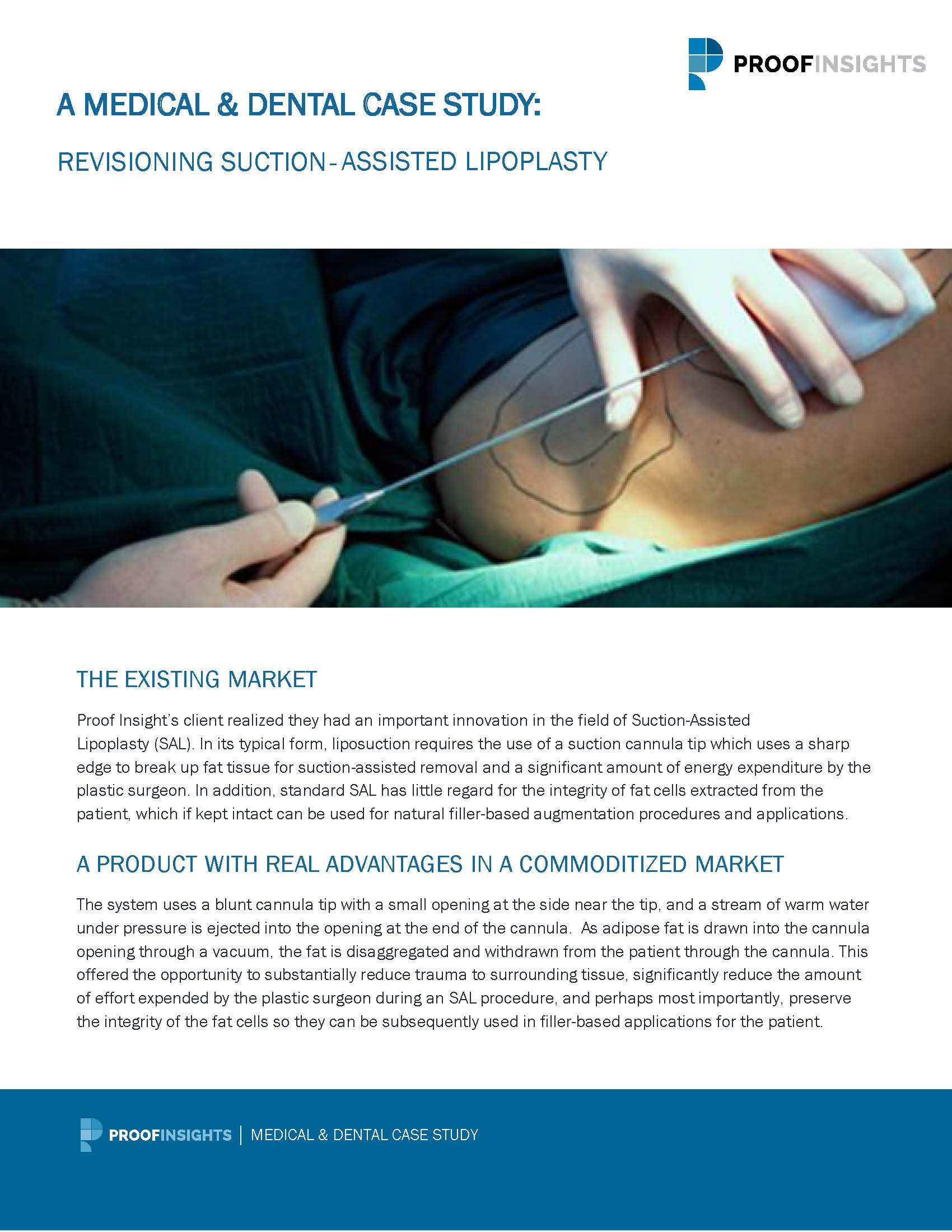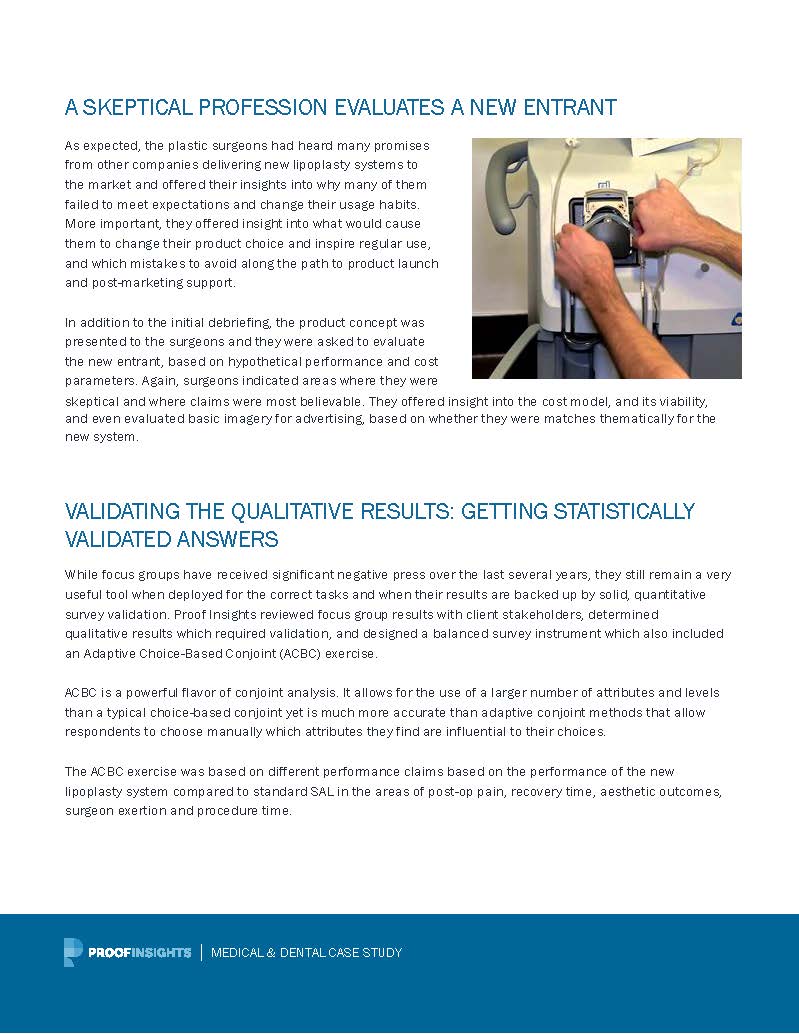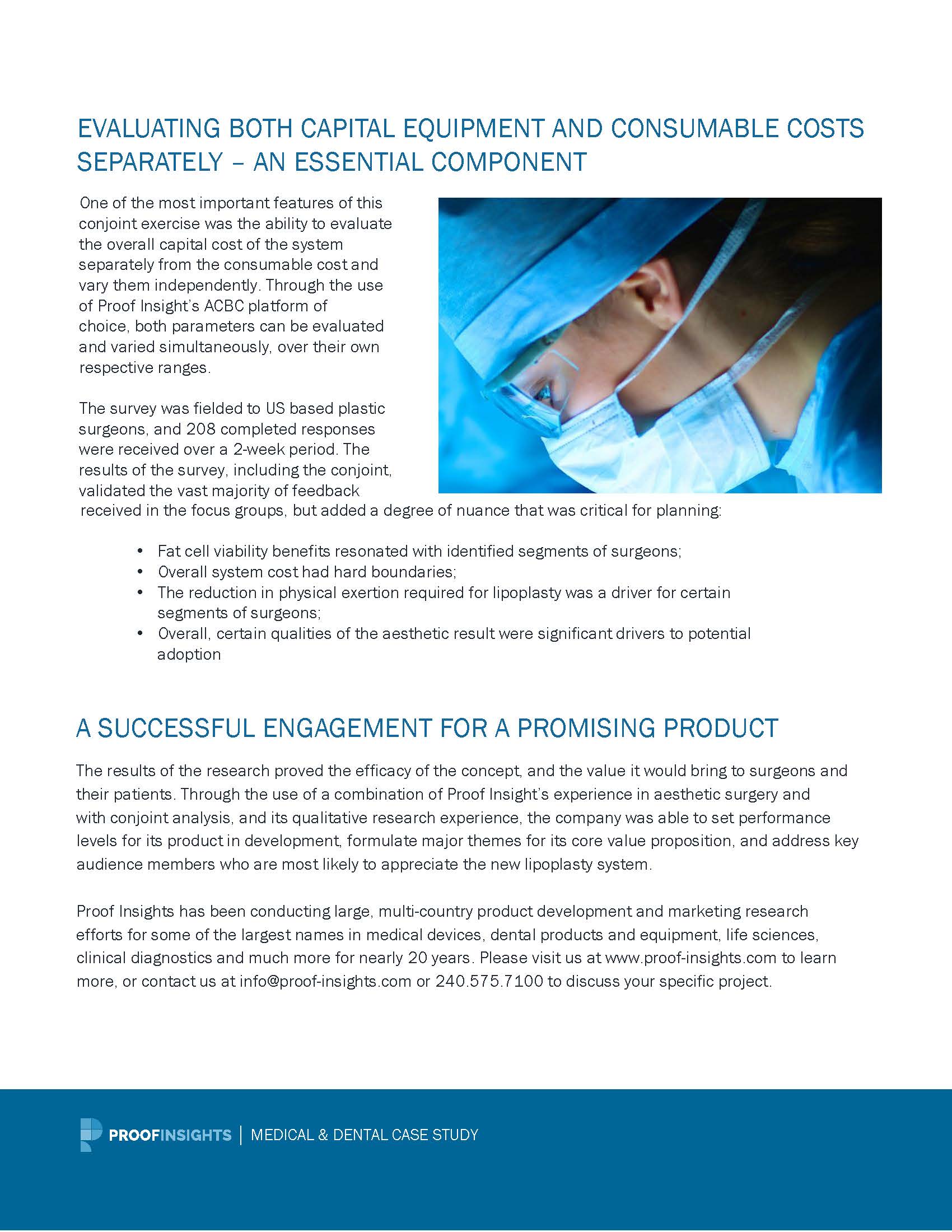Revisioning Suction-Assisted Lipoplasty: Medical Device Innovation
How a medical device innovator validated their revolutionary lipoplasty system using advanced ACBC conjoint analysis and focus groups, proving concept efficacy and establishing performance benchmarks for market launch.
Project Details
Key Results
The Existing Market Challenge
Proof Insight's client had developed an important innovation in Suction-Assisted Lipoplasty (SAL). Traditional liposuction required sharp-edged suction tips, significant energy expenditure, and provided little regard for fat cell integrity - limiting opportunities for natural filler-based applications.
- Sharp cannula tips causing trauma to surrounding tissue
- High energy expenditure required from surgeons
- Damaged fat cells unsuitable for filler applications
- Skeptical profession resistant to new innovations

Revolutionary Approach
Blunt cannula tip with warm water stream for gentler, more effective fat removal while preserving cell integrity.
Product Innovation
A Product with Real Advantages
The revolutionary system uses a blunt cannula tip with a small opening at the side near the tip. A stream of warm water under pressure is ejected into the opening at the end of the cannula, disaggregating fat as it's drawn through vacuum.
Reduced Trauma
Substantially reduces trauma to surrounding tissue during procedures
Energy Efficiency
Significantly reduces physical effort required from plastic surgeons
Cell Integrity
Preserves fat cell integrity for subsequent filler-based applications
Research Questions
Market Adoption Factors
What drives plastic surgeons to adopt new lipoplasty innovations?
Cost-Benefit Analysis
How do capital equipment and consumable costs influence decision-making?
Feature Prioritization
Which product benefits resonate most with target segments?
Research Methodology
Focus Groups in New York & Los Angeles

- Recruited plastic surgeons from major metropolitan markets
- Transcribed audio and video for comprehensive analysis
- Captured complete view of motivations and concerns
ACBC Conjoint Survey Validation

- 208 completed responses over 2-week period
- Statistical validation of qualitative insights
- Performance claims analysis across multiple attributes
Essential Research Findings
Evaluating Capital Equipment & Consumable Costs
One of the most important features of this research was the ability to evaluate the overall capital cost of the system separately from the consumable cost, allowing both parameters to be varied independently through ACBC analysis.
Fat Cell Viability Benefits
Resonated with identified segments of surgeons performing filler procedures
System Cost Boundaries
Overall system cost established hard boundaries for market acceptance
Physical Exertion Reduction
Significant driver for certain surgeon segments performing high-volume procedures
Aesthetic Result Quality
Certain aesthetic outcome qualities were significant adoption drivers
A Skeptical Profession Evaluates Innovation

Plastic surgeons had heard many promises from companies delivering new lipoplasty systems, with many past innovations failing to meet expectations and change usage habits.
The research provided critical insight into what would cause surgeons to change their product choice and inspire regular use, identifying the most believable claims and cost model viability.
Successful Engagement Results
Research Outcomes
Strategic Value Delivered
Through the combination of Proof Insight's experience in aesthetic surgery research and ACBC conjoint analysis expertise, the company was able to set performance levels for product development, formulate major themes for core value proposition, and address key audience segments most likely to appreciate the innovation.